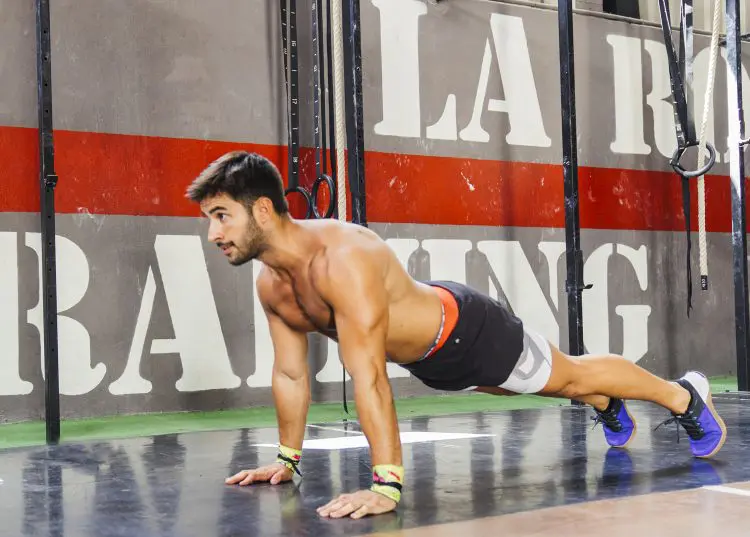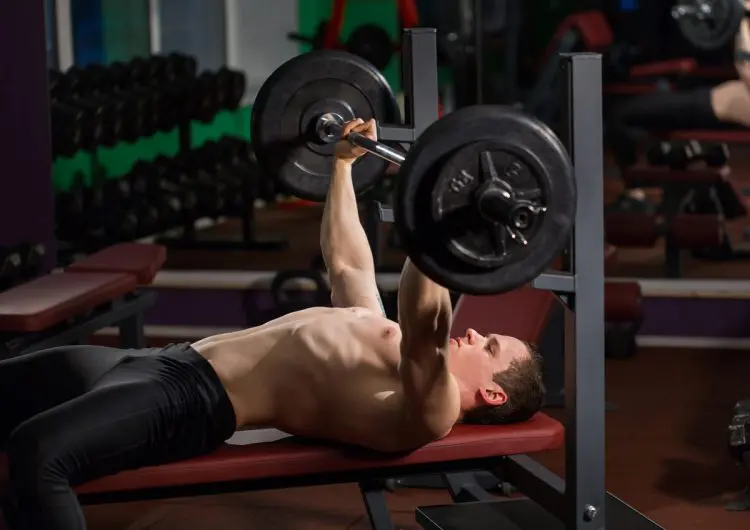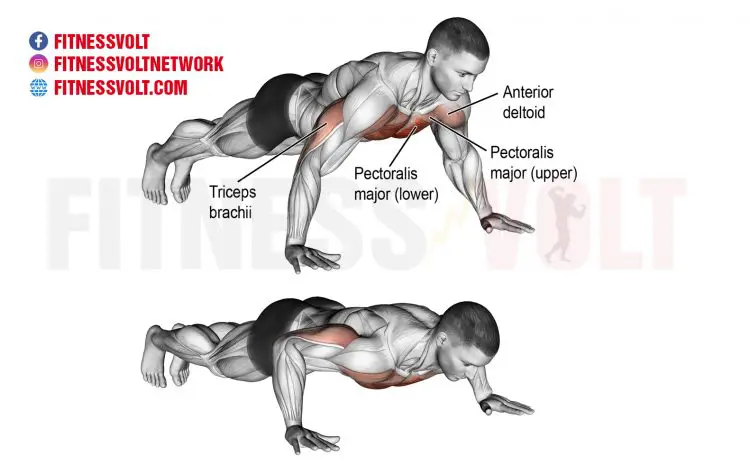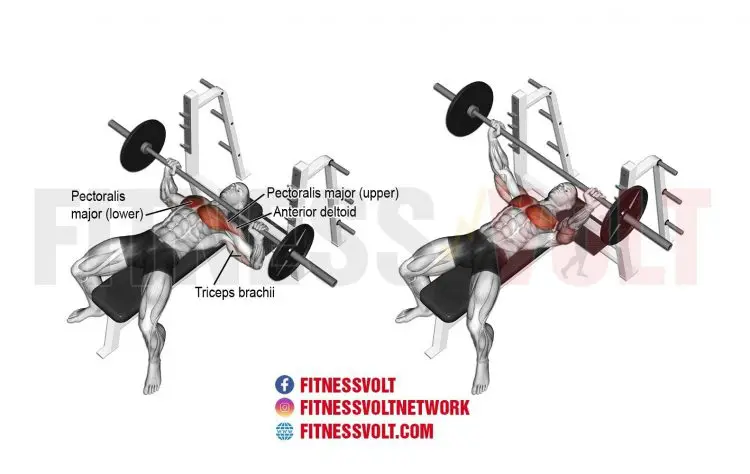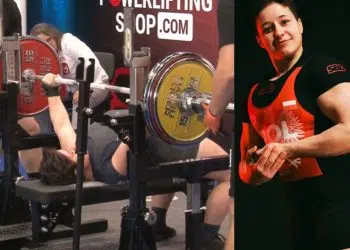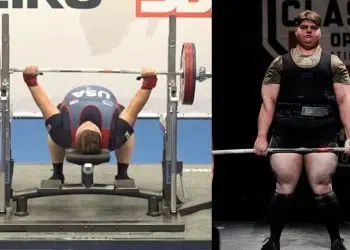When it comes to Chest Day, there are two exercises every weight trainee uses:
- Push-Ups, working with bodyweight.
- Bench Presses, working with a heavy barbell.
These are the “bread and butter” of every Chest Day workout. Sure, variations are included—Clap-Ups for more explosive power, Incline or Decline Bench Presses to change up the angle, even Dumbbell and Cable Flys to focus on the outer chest muscles—but Chest Day always starts with one of the two foundational exercises.
So, of course it’s inevitable that resistance trainees would ask, “Which is better?”
We’re going to take a deep dive into both exercises and carefully scrutinize every aspect of each to make it very clear which of the two is the superior chest-building movement. By the end of this page, you’ll know exactly what exercise should be the staple of your Chest Day routine.
The Push-Up Basics
With the Push-Up, it’s all about your body weight. You can always wear a weighted backpack, stack weight discs on your back or change up the angle (elevate your legs) to make the exercise more difficult, but at its core, the Push-Up focuses on working with your specific weight.
Level Up Your Fitness: Join our 💪 strong community in Fitness Volt Newsletter. Get daily inspiration, expert-backed workouts, nutrition tips, the latest in strength sports, and the support you need to reach your goals. Subscribe for free!
To perform the Push-Up:
- Get into the High Plank position, with your weight resting on your hands and feet, arms extended fully.
- Keep your neck relaxed but tighten your core, glutes, and hamstrings to keep your body stiff. Don’t let your back sag when you Push-Up!
- Inhale, then bend your arms to lower your body toward the floor.
- Without moving your head, lower yourself until your face and chest are a few inches above the floor.
- Stop, hold for a half-count, then push back up to the starting position, exhaling as you push.
It’s a very basic movement, one that anyone can master. Though it can be difficult for beginner trainees or those carrying a lot of excess bodyweight, the simplicity of the Push-Up makes it an excellent exercise for newbies to tackle. However, despite its simplicity, it’s challenging enough that even advanced trainees will find it difficult (with a few variations as needed).
The Bench Press Basics
The Bench Press uses a barbell to place the load directly above your chest. The up-and-down movement is identical to the movement utilized for the Push-Up, but instead of pushing your weight away from the floor, you push the weight away from the bench.
To perform the Bench Press:
- Rack an Olympic barbell on a Bench Press bench. Add weight discs as desired, or, for beginners, start off working with the barbell alone.
- Lie on your back on the bench. Plant your feet firmly on the floor, with your knees bent and your back straight. Shift your position on the bench until the barbell is racked at roughly forehead level.
- Reach up and grip the bar slightly farther than shoulder width apart. There are “knurling marks” etched into the barbell to let you know precisely where to grip, though above- and below-average-height trainees may need to adjust their grip outward or inward based on their specific physiology.
- Inhale, then lift the bar off the rack and bring it into the ready position directly above your chest.
- Bend your arms to lower the weight toward your chest. Make sure to control the movement so the weight remains balanced and in the correct position above your chest.
- Stop the weight just before it touches your chest (though some resistance trainees do like to make contact).
- Exhale as you push the weight back up to its starting position. Push with both hands in synchronous motion to avoid the barbell tipping to either side.
- Hold for 1-count at the top of the push, inhale, then lower again.
Bench Presses require a degree of control (to keep the weight balanced and in the correct position above your chest), but they are easy to master and are the foundation of a solid chest workout.
A Closer Look at the Noticeable Differences
Muscle Recruitment
Both exercises target the same group of muscles. Your chest muscles (pectoralis major and minor) are the prime movers, but the anterior deltoids, latissimus dorsi, and triceps muscles all join in for the pushing motion.
However, there is one slight variance between the two: with Push-Ups, you get significantly greater core and lower body activation.
When lying flat on your back on the bench, the bench is supporting your body, so you need only focus on pushing the weight up and down and keeping the barbell controlled throughout the full range of motion. That isolates the focus chiefly to the prime movers and secondary muscles engaged in the Bench Press, though your core does work to maintain stability and balance.
With Push-Ups, you have to brace your core and lower body muscles to maintain a stiff platform throughout the exercise. Your abs and lower back do a lot of the core work, but even your obliques are engaged. Your glutes and hamstrings also contract for as long as you are in the High Plank position. The result: noticeably greater core activation when performing Push-Ups versus Bench Presses.
Strength Gains
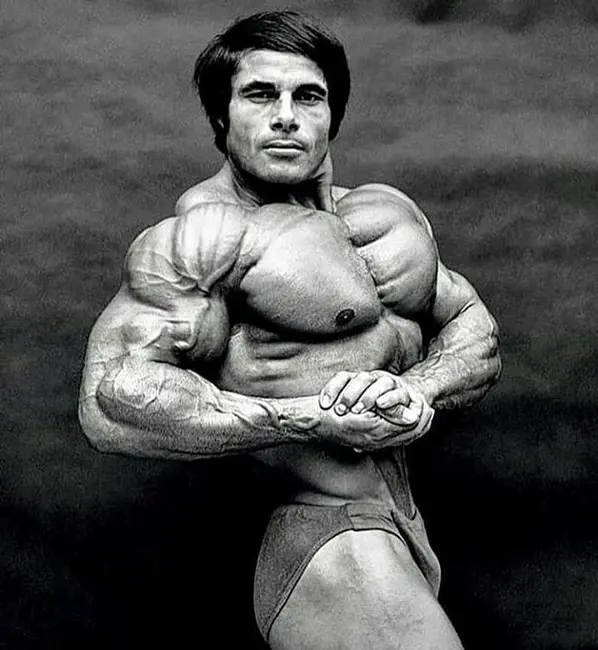
In a study back in 2015, researchers examined the effects of Bench Presses vs. Push-Ups to determine which would lead to greater strength gains. For a 5-week training period, participants performed either 6-Rep Max Bench Presses, 6-Rep Max Push-Ups with an Elastic Band (to increase the difficulty of the exercise), and a control group.
After the training period, the researchers found that both Bench Press and Push-Up groups saw noticeable improvement in both their 1-Rep Max and 6-Rep Max, with similar gains.
Level Up Your Fitness: Join our 💪 strong community in Fitness Volt Newsletter. Get daily inspiration, expert-backed workouts, nutrition tips, the latest in strength sports, and the support you need to reach your goals. Subscribe for free!
Another study in 2018 ran the comparison again, assigning participants to either a Push-Up group or Bench Press group, and trained in three weekly sessions for 4 weeks in a row. At the end, they underwent tests to measure their strength (1-Rep Max), muscle thickness, and Push-Up progression.
The study found that overall there were no measurable differences between the two. Both groups saw similar improvements in their strength (as measured by the 1-Rep Max test) and muscle thickness.
However, the Push-Up group saw a “significant increase in Push-Up progression” compared to the Bench Press group.
What does this mean? In this case: Push-Ups will help you Bench Press better, but Bench Pressing may not help you perform more Push-Ups.
Another study from mid-2019 examined the actual muscle composition of resistance trainees performing both types of exercise, and found that Push-Ups led to greater muscle activation in both concentric and eccentric phases of the movement. This greater muscle activation will, in the long run, encourage better muscle hypertrophy.
Functionality
Push-Ups are “closed chain” exercises, while Bench Presses are “open chain” exercises. What do these terms mean?
Closed chain
Closed chain also known as closed kinetic chain—exercises are defined as, “exercises or movements where the distal aspect of the extremity is fixed to an object that is stationary.” In this case, the stationary object is the floor. It’s your body that is doing all the moving, pushing up from and lowering toward the floor.
Open chain
Open chain also known as open kinetic chain—exercises are defined as, “exercises or movements where the distal aspect of the extremity is free to move.” It takes effort to maintain control over the loaded barbell because it’s not fixed to anything.
You may be wondering why we’ve taken the time to define these terms. It all comes down to which of the two types of exercises are most effective. And the answer is “closed chain exercises”.
You see, research has suggested that not only are closed chain exercises more reliable, but they also lead to the development of more “functional” strength. They reduce the “shear forces” that could damage your joints and force the muscles supporting those joints to work harder in order to increase stability.
With Bench Presses, your body has to work hard to control the free weight that is resting atop your hands at the end of your arms. This open chain exercise ends up being higher-risk for injury and shifts the focus away from the secondary muscles that are needed to keep your entire body stable.
While this can lead to targeted strength-building in your chest muscles, it actually eliminates the “full body” benefits that Push-Ups provide.
Pros and Cons of Push-Ups
Here are a few of the benefits and drawbacks of doing Push-Ups you need to know about before incorporating them into your workout routine:
Pros:
- Better trunk and lower body muscle activation, which leads to greater overall strength and core stability.
- Greater engagement of the serratus anterior muscle (along your ribs), which is vital for smooth, healthy shoulder joint movement.
- Increased “functional strength”, or strength developed as your muscles work together to perform your activities of daily life.
- More variations means greater adaptability to your current fitness level.
Cons:
- Difficult for beginners to do—which is why Kneeling Push-Ups were invented in the first place!
- With the full bodyweight resting on the wrists, people with limited wrist joint mobility may experience discomfort or even pain.
- Fatigue during Push-Ups can lead to poor posture more quickly, including letting the back sag, lowering the head, and flaring out the elbows.
Pros and Cons of Bench Presses
Here are some of the arguments for and against doing Bench Presses:
Pros:
- Isolated focus on the “Push” muscles. Bench Presses target the upper body push muscles for maximum hypertrophy and strength gains.
- Adjustable load. You can simply remove or add on weight discs according to your current capabilities. The ability to make minute changes (by working with disc plates weighing as little as 2.5 pounds and up to 45 pounds) enables you to increase or decrease your weight precisely with each workout, even each set.
- More core support. For those recovering from lower back injuries, Push-Ups are likely off the table. With Bench Presses, however, your back is fully supported, making it a much safer, smarter choice.
Cons:
- Gripping a heavily loaded barbell can be challenging for those with wrist limitations or insufficient grip strength. The weight can also sit very heavily on your palms, causing pain or forcing you to wear lifting gloves for added cushioning.
- Challenging to maintain stability. For beginner trainees, it can be difficult to adapt to the open chain exercise, and sufficient core strength is needed keep the barbell steady, balanced, and stable as you lower and push up.
- May require assistance. You will likely need a spotter to work with you if you’re Bench Pressing very heavy loads. The last thing you want is to end up with a loaded barbell sitting atop your chest or neck.
Read also:
- Chest Press Vs. Bench Press
- Barbells vs. Dumbbells: Which is Best?
- Lunges vs. Squats – Which Exercise is Best?
- Hex Bar vs. Barbell Deadlift – Which is Best?
- The Powerlifting vs Olympic Squats: Which Style Is Better?
- High Bar vs Low Bar Squat Debate
- Bicep Curl vs. Hammer Curl
Conclusion:
While both Bench Presses and Push-Ups are excellent exercises for developing your upper body “Push” muscles, it’s clear that Push-Ups have the slight edge. They lead to greater muscle activation throughout your entire body, which in turn leads to better trunk strength and full-body stability, not just gains in your chest muscles.
However, for the most effective workout, it’s a good idea to include
both exercises into your routine. You can mix and match, doing bodyweight Push-Ups one week and loaded Bench Presses the next week, or incorporate both into the same routine. The ultimate outcome will be the same: greater push power and visible chest muscle hypertrophy!

